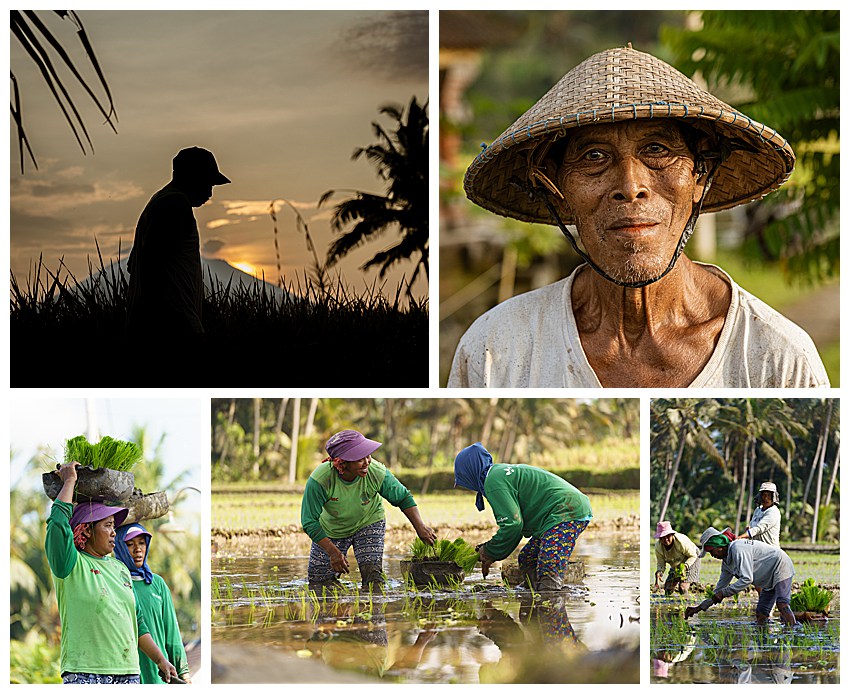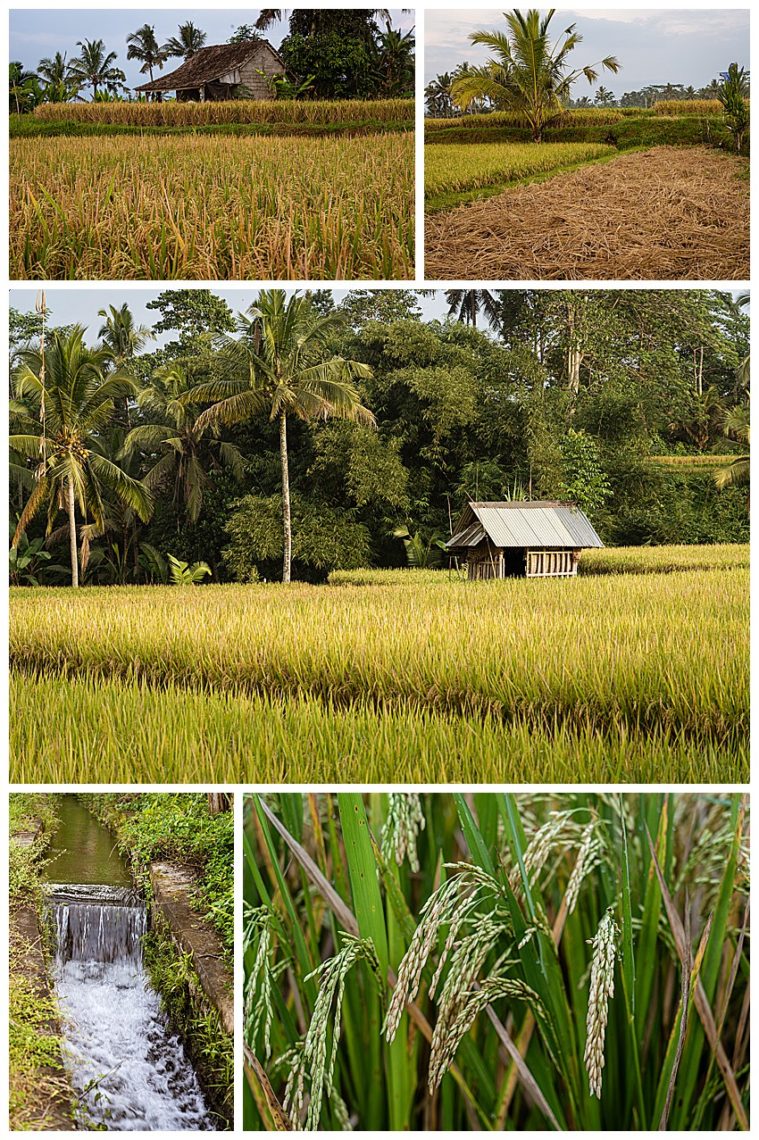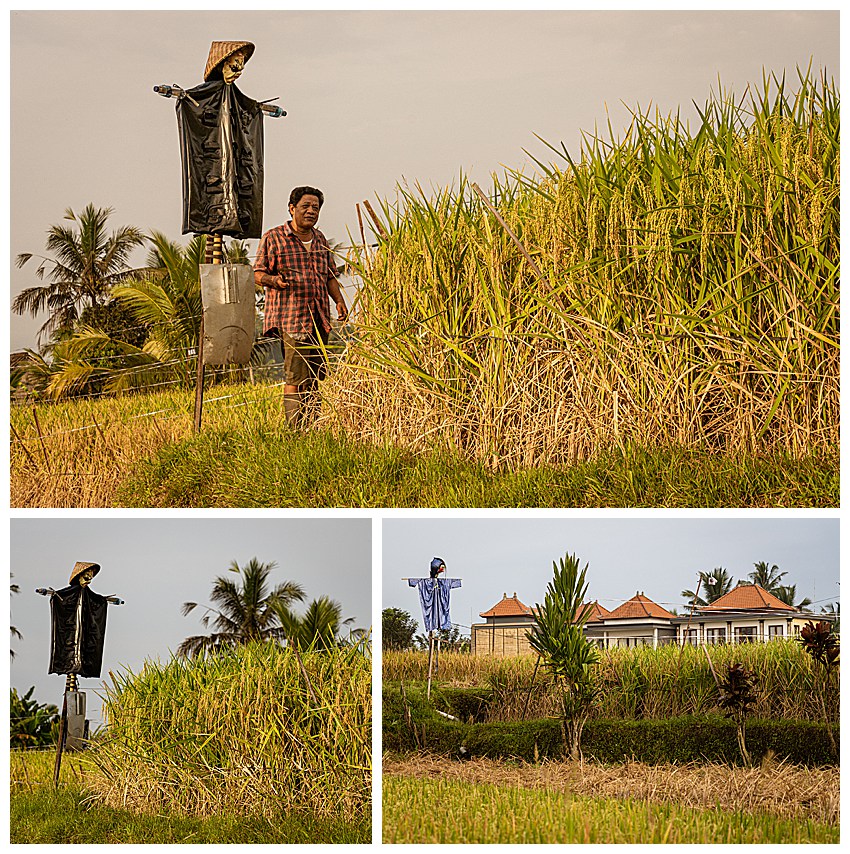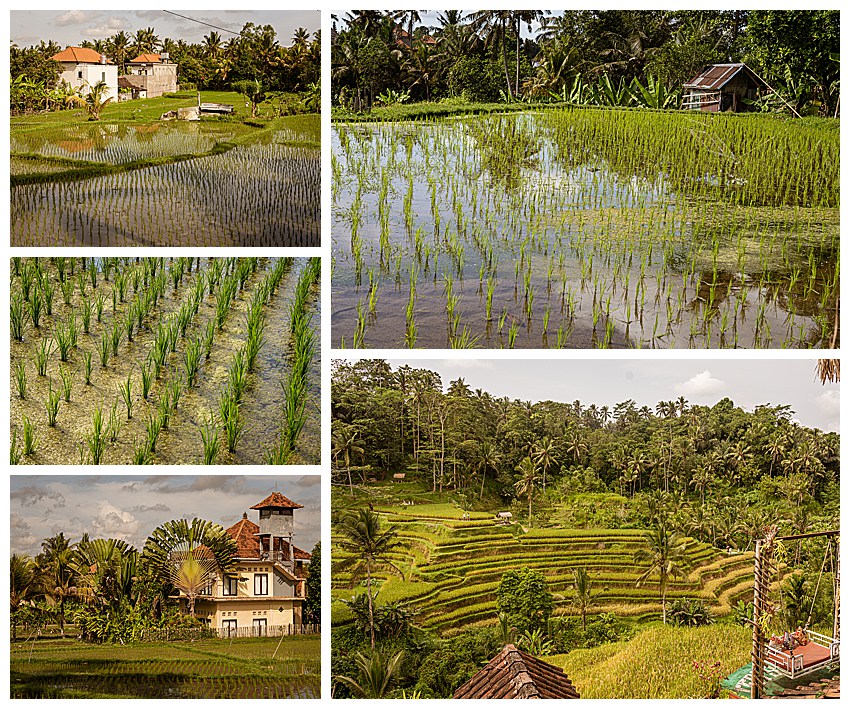
Rice production is a very important part of Bali’s and Indonesia’s economy and culture, accounting for more than half the caloric intake of the average diet.. Indonesia is the third largest producer of rice in the world, and the rice cycle is a process that takes either approximately 120 or 210 days, depending on the type of rice grown.
This short 35 sec video shows Balinese farmers planting rice, then a sweep of a rice field nearly ready to harvest, and finally harvesting of the rice (about 110 days after planting)

In Bali, the rice fields of Tegallalang are located just outside of Ubud. This is one of 3 boutique villages known for their terraced layout. They utilize sustainable water management (irrigation) known as the Subak system in Bali. Rice paddies are part of the people’s heritage. The centuries-old irrigation system, which is environmentally sound, has been recognized by UNESCO world cultural landscapes. The Subak systems is comprised of canals through which the water from natural springs flows through water temples and from there to the rice paddies(lower left).

Rice production is still done primarily manually in Bali, yet recognized as having one of the world’s highest yield production per acre. There are various steps in rice cultivation including field preparation, flooding and planting seedings, transplanting, fertilizing, pest management, harvesting, threshing, drying, storage and marketing. The birds prefer the taste of organic rice. Farmers install scare crows in the rice paddies with farmers banging metal (upper) to keep the birds away during harvest season.

Rice paddies are beginning to disappear as an increasing numbers of farmers are selling off their land for vast real estate development projects. Many of their kids have no interest in rice farming, and can get lucrative jobs in tourism, teaching or construction. Commercial swings are now often installed for tourists to swing over picturesque rice fields (bottom right).
